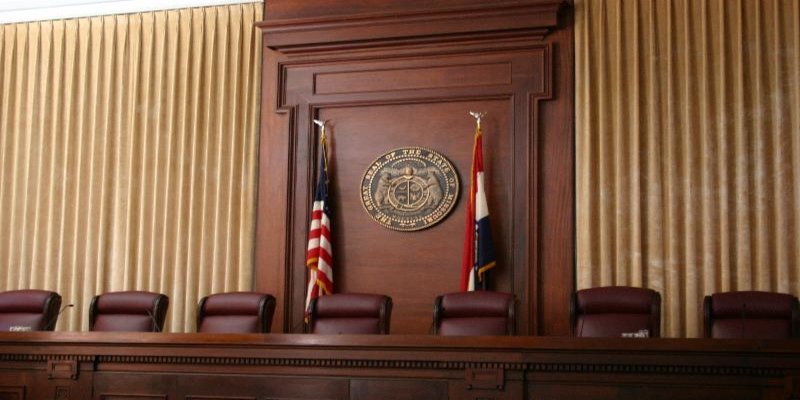As the Governor “reopened” the State of Missouri beginning May 4, the Chief Judge of the Missouri Supreme Court had to consider whether and how to do the same with the Missouri court system. On May 4, and effective May 16, the Missouri Supreme Court issued a set of Operational Directives to guide each circuit court and county in easing any restrictions to allow more in-person activity in the courthouse.
Our supreme court took an approach that mirrors the phased guidelines developed by the Centers for Disease Control and Prevention. We will summarize these phases first, and after address what litigants can reasonably expect in the weeks ahead.
All courts begin at Phase Zero and can proceed incrementally based on how they handle incidents of COVID-19. Phase Zero would be the stage in which the courts have been operating – essentially the suspended in-person activity since the stay-in-place orders issued. To move past Phase Zero to Phase One, a courthouse must have no incidents of the virus in the facility for a 14-day period; a relaxing of stay-at-home orders in its county; improved statistics with regard to the health of the community as measured by new cases per capita and stress on hospitals; and consultation with appropriate public health officials. If these criteria are met, a presiding judge may recommend and order movement to Phase One. In this phase, courts should consider resuming only “the most critical in-person proceedings and restrict grand and petit jury proceedings to only the most extraordinary, pressing and urgent cases.” Large venues and common areas must remain closed, occupancy rates must be 10 or less in a courtroom, strict social distancing measures must be in place including pathways with marked six-foot spacings. Masks are encouraged. No vulnerable attorneys, witnesses, victims, litigants, or other individuals should be forced to attend and must be given the ability to appear remotely. Appropriate screening to enter the building must be put in place, which means taking temperatures and surveying whether a person has tested positive or been near someone who has tested positive or had symptoms of the virus. Increased cleaning and disinfection must occur, and all employees who wish to work remotely should be allowed and even encouraged to do so to keep the court population as low as possible.
If a court successfully operates at Phase One for 14 straight days – meaning no incidents of infection and positive signs of improvement in the community – a courthouse can proceed to Phase Two. The difference between Phase One and Two is not that much – proceedings are limited to extraordinary case needs, remote work is encouraged, and capacity goes up to 25.
After 14 straight days of success at Phase Two, a court can move to Phase Three, where regular in-person court proceedings can resume, including grand and petit jury proceedings. However, all containment procedures, including social distancing, low density, and the wearing of masks, must continue, as well as screening and contact tracing and encouraging remote work for all employees. No court can advance past Phase Three until further order of the supreme court.
With these guidelines, one can see that our courts are wisely moving forward with extreme caution. Courthouses continue to be places that can fill with hundreds of people quite quickly, with many in small or confined spaces, including and particularly elevators. If a courthouse tries some relaxation and one incidence of infection is reported in the courthouse, the courthouse must immediately go back to the previous phase or even Phase Zero, in the discretion of the presiding judge. The guidelines do allow each county to develop its own procedures consistent with the supreme court Operational Directives, but no county can move faster than recommended, and counties that have more difficulty with the virus need not advance at a rate beyond Phase Zero until the court administrators and public health officials deem it safe to do so.
On a practical note, litigants wanting to see a non-emergency case heard in person will have to wait at least until July given the time constraints of the Operational Directives – if not later, given the logistics of managing a calendar and docket. Criminal cases that require juries are on hold until the supreme court issues directives for jury management, which will be quite difficult to handle in large metropolitan areas because jury rooms often contain hundreds of people and it may not even be possible to work such an arrangement – we will need to see what the supreme court recommends. Civil jury trials may need to wait even longer, where constitutional rights to a speedy trial are not in play.
Many questions remain unanswered, and because of that unknown aspect, the courts are rightly moving slowly. We all want the justice system to become fully open again, but certainly not at the risk of exposing people to illness or worse. It is likely that if the baby step approach results in some new infections, courthouses will have to consider other alternatives that take greater advantage of technology to assure that cases can continue to move but also protect everyone’s safety.
If you, as a litigant or witness or attorney or citizen, feel at all uncomfortable about appearing in court, know that under current guidelines you cannot be forced to attend nor penalized if you simply feel too afraid to risk exposure. The courts must find ways to accommodate you, not the other way around (at least under the current orders).
We are in unchartered waters. If you have a pending case or want to file a case, know that every step will be taken to have your matter heard. Just be prepared to be patient and to understand that delays due to the virus might be part of the process.
If you have questions about COVID-19 and access to the courts, contact us – we can help.
